MENSHO In Gokokuji - A Ramen Shop Connecting Producers And Consumers

MENSHO, a ramen shop in Tokyo's Gokokuji area, not only offers tasty noodles, but is also actively engaged in activities that have the ramen world watching closely. Make a visit to MENSHO, where you'll find dishes that are unavailable anywhere else.
The Concept of FARM to BOWL
Located not far from the bustling shopping and business district of Ikebukuro, is a ramen shop called MENSHO. This is a popular place that's always busy with customers, and its appeal isn't limited to the delicious tasting noodles.
The shop's guiding philosophy is based upon a concept called FARM to BOWL, and has a legion of loyal fans.
Shono-san, the shop's owner, travels throughout the country in search of high quality Japanese ingredients. Using ramen as his medium, he promotes the goodness of these carefully selected home grown ingredients, and by doing so, connects producers with consumers.
The concept of FARM to BOWL captures his thoughts, ideas, and philosophy on the topic of food.
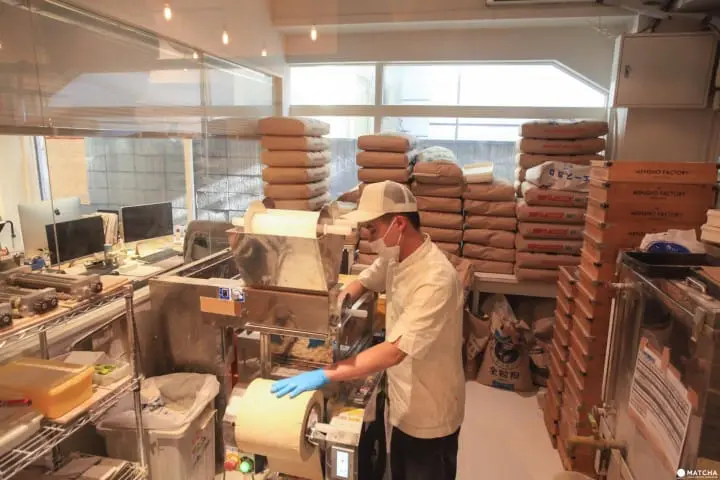
Noodles are made fresh on the premises using this machine. Piled up high in the back are bags of flour.
As part of this concept, unmilled wheat is brought in to MENSHO directly from the farm. The wheat is ground on a millstone right on the premises, then made into noodles for the customers.
The wheat is milled in small batches and then immediately made into noodles. In this way, customers can enjoy the original taste and aroma of the wheat flour, something that tends to get lost when the flour is made in large amounts.
In the words of Shono-san, "it's a time-consuming and difficult process, but by taking on this challenge we're able to communicate to the customer how wonderful these ingredients really are, and we'd also like them to have a sense of gratitude for their food, a feeling that's all too often absent in this modern age. So for this reason, we're putting our heart and soul into what we consider to be an important undertaking."
MENSHO - A Dish That's Been Given Special Attention To
Next, let's introduce some superb ramen and tsukemen dishes that are being made with pride and confidence by MENSHO.
At the present time (early April, 2018), there are two different main menus on hand.
Customers can rest assured that all dishes do not contain any chemical seasonings or additives whatsoever.
Shio Ramen - Taste the Bounty From the Sea

First up is Shio ramen, considered to be MENSHO's signature dish (1000 yen with tax).
The soup is made with a red sea bream fish stock and filled with plenty of scallops and konbu seaweed, and doesn't contain pork, chicken, or any other meat ingredients.
The shio-dare (salt-based sauce), is made with sea salt, and customers can enjoy the full spectrum of flavors from the sea's bounty. You could also say that this ramen gives customers a sense of the ocean.
The noodles are home-made right on the shop premises using wheat flour as the main ingredient.
The noodles maintain a strong presence and don't take a back seat to the soup's tantalizing seafood aroma. Even as time passes, they don't soften and lose their texture, so you can take your time enjoying this dish.
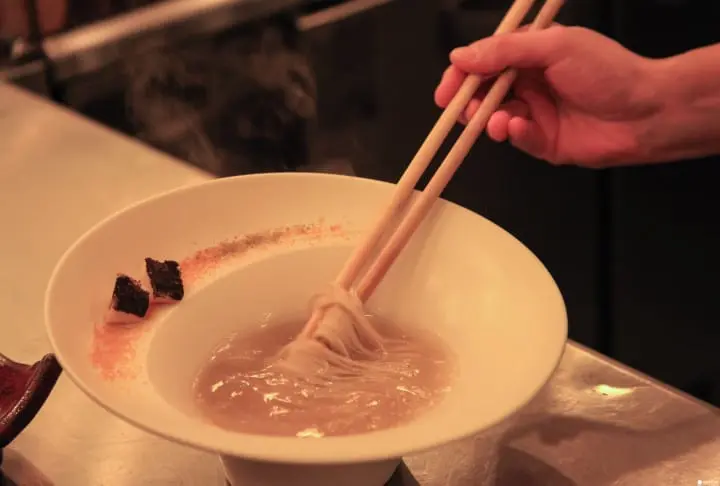
By the way, sitting on the edge of the ramen bowl is karasumi (*1), or salted fish roe, considered to be one of Japan's three main delicacies, and also dried scallop coated with a powder made from carbonized green onions. Place some of the karasume on the noodles, and they develop a richer taste, making for an interesting experience.
Filled with luxurious, highly unique ingredients such as fresh chicken tataki (*2), and wonton filled with maguro tuna to name just a few, one bowl of ramen allows customers to sample a variety of tastes. One of the characteristic features of this ramen, is that one bowl almost feels like a full course meal.
This is amazing ramen, and for what you're getting, 1,000 yen feels like a bargain!
*1 Karasumi: gray mullet fish roe that's first salted and then dried.
*2 Tataki: fresh meat or fish that's been slightly heated under a flame.
Stone Milled Wheat Noodle Tsukemen - Enjoy the Essence of Noodles

For those who'd like to enjoy tasting home-made noodles made from wheat flour that was freshly ground on the shop's own millstone, we recommend the stone milled wheat noodle tsukemen (1000 yen with tax).
Unmilled wheat is completely milled, then right after it's turned into whole wheat flour, the noodle-making process begins. The finished product is a home-made noodle high in nutrition and particularly tasty and aromatic.
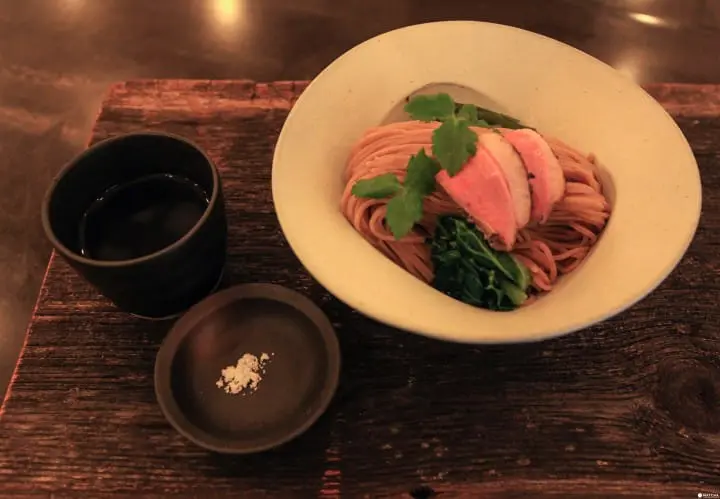
First, rather than putting the noodles into the soup right away, we'd like you to try eating them in a mixture of mineral water (onsen mizu) and salt only (the left side in the above photo).
Many first timers will be surprised to find out that even without dipping them in a soup, noodles taste delicious just by themselves in a simple mixture of mineral water and salt. While giving this simple eating style a try, one might absentmindedly forget that dipping the noodles into a flavorful soup made with duck meat would of course also be tasty!

The chashu duck meat in the above photo looks exquisitely beautiful, and by cooking it slowly at low temperatures, it retains its texture.
Also, slightly scorching the surface of the meat brings out the aroma of the duck and it's truly delicious flavor.
MENSHO has already taken the concept of ramen toppings to a whole new level, and this excellent dish wouldn't look out of place among high class French cuisine.
A Side Menu Filled With Carefully Selected Food Items
At MENSHO, they are a particularly fussy about their side menu, not to mention the ramen and tsukemen dishes. There are simply far too many items to mention here, so this writer will introduce one of their favorite dishes.
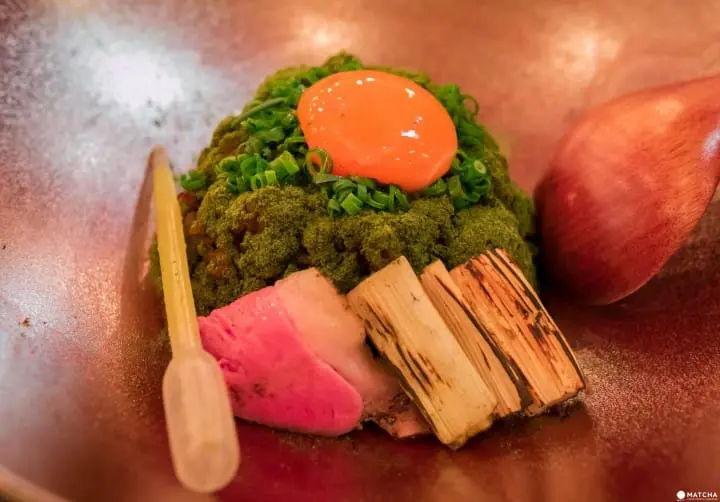
This is kamo gohan, a rice dish served with duck meat (350 yen with tax). In a fashion similar to the ramen and tsukemen dishes, the presentation of this dish is extremely beautiful. With a characteristic red-colored bowl this is a dazzling feast for the eyes, and a meal befitting kings and members of the noble class.
The rice, which has a slightly strong flavored shoyu (soya sauce) taste, is covered with a green colored substance (photo above). This is powdered yakinori (baked black seaweed) from Ariake. The dish is garnished with duck meat, baked green onions, and an egg yolk, and there's also duck meat inside the rice mixture, so this meal boasts plenty of volume.
The meal also comes with an eye dropper containing citrus fruit juice. Adding some of this during your meal will give a refreshing aroma and taste, creating a whole new flavor dimension that allows you to enjoy this dish right up to the very end. It's hard to believe that this meal only costs 350 yen.
Both the ramen and the side menu are unique and one of a kind, and can only be experienced here at MENSHO.
Special Consideration Given to the Shop's Atmosphere
So far we've introduced the shop's concept and ramen, but at MENSHO, which is at the cutting edge of the ramen world, there are also other features where they've focused their efforts and energy.
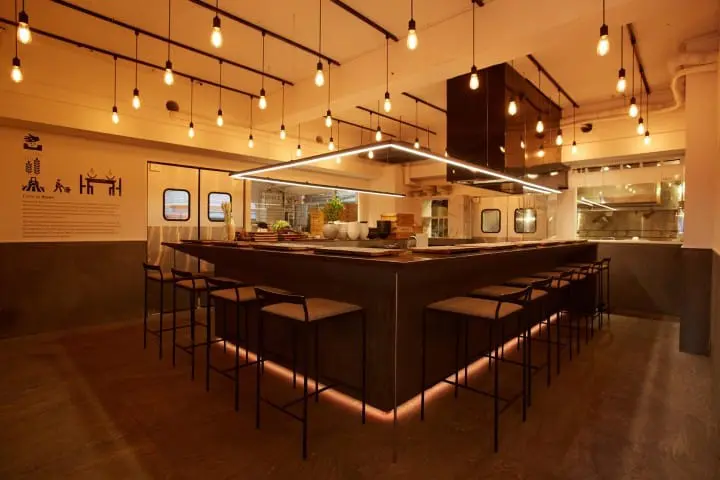
Photo courtesy of: MENSHO
At MENSHO, the seats are generously spaced apart, giving customers a relaxed and open environment in which to enjoy their dining experience.
The interior lighting is not uniform, but instead the shop has employed a contrasting scheme of light and shade throughout its space. By doing so, the diners' attention is naturally drawn to the top of the table, allowing them to focus on and fully enjoy their meal.
This writer, who has visited the restaurant on numerous occasions, also agrees with the success of this lighting refinement.
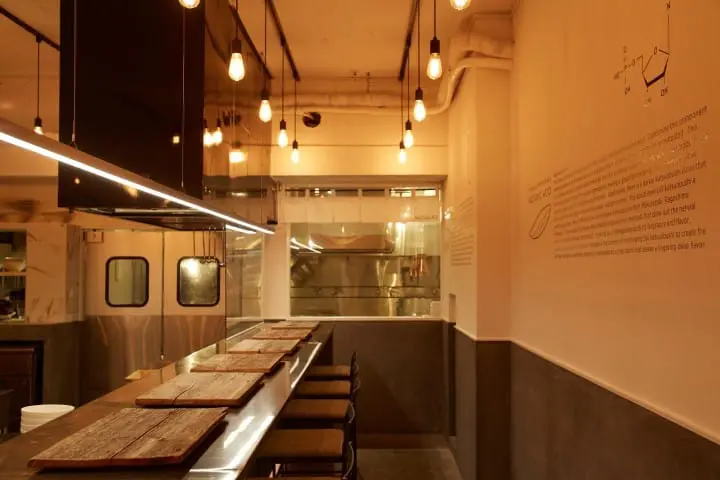
Photo courtesy of: MENSHO
The table tops are illuminated with just the right amount of lighting, and apparently this is to make the ramen look more beautiful and exquisite when customers take pictures of their noodles before eating them.
This is a thoughtful gesture that's highly appreciated by internet junkies like this writer and many others.

Photo courtesy of: MENSHO
MENSHO has also built an adjoining office beside their restaurant section. From here, they send out the latest shop news and their ramen research findings to the rest of the world.
This writer, who's an avid ramen fan, looks forward to seeing how MENSHO evolves and develops as a whole from here on in.
MENSHO - How It Got Its Start
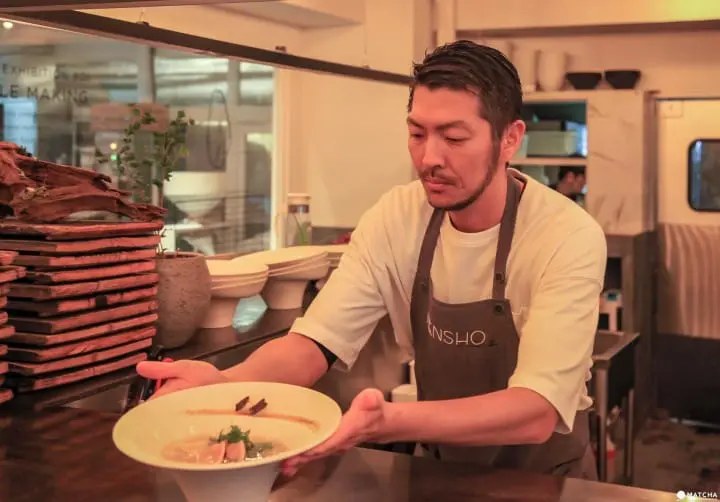
Actually, Shono-san said that the present day MENSHO was not the kind of shop that he had originally envisioned.
In Shono-san's own words:
"Once when I went out to Ishikawa prefecture to visit the place where sea salt is produced, I heard in depth about sea salt and some of their hidden stories from the local producers.
For example, the flavor of the salt can change depending on the climate when the salt is being left to dry. Though all the salt looks similar in appearance, the flavor will never turn out exactly the same.
This is the kind of knowledge that the average person knows very little about. So a desire to pass on this interesting knowlege to all of our customers, led me to opening the kind of shop that MENSHO currently is."
MENSHO was born out of the concept of FARM to BOWL, which was mentioned earlier in this article. This concept is the result of careful consideration for and the close attention paid to the wheat flour, the meat, and the other ingredients.
If Shono-san's message gets passed along and more people have a sense of gratitude for the food they receive and eat, this could gradually have a positive impact on the increasing world problem of food wastage.
In light of this global problem, this writer is one person who will continue to support and encourage MENSHO for its efforts to take action on an important issue, one which all too many people choose to remain silent on.
Access to MENSHO
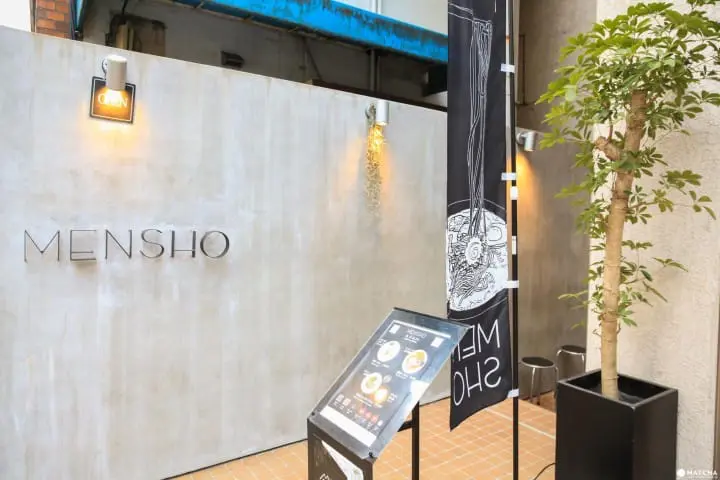
Finally, I'd like to give some easy to follow access information.
The nearest station is Gokokuji Station, on Tokyo Metro's Yurakucho Subway Line. From the station's exit # 6, it's only a two minute walk. All you need to do is walk straight ahead, so it's unlikely you'll get lost.
On your right side you'll see a sign with MENSHO written on it (see above photo), serving as the shop's signpost.
Read More About Ramen:
Ramen Guide: Types, Regional Varieties & Tokyo's Best Ramen Restaurants
Try A Rich Tasting Lamb-Based Ramen At MENSHO TOKYO
Kyoto Ramen Koji: Try Ramen From All Across Japan In One Restaurant!
Safe To Visit With Your Girlfriend! 5 Healthy Ramen Shops In Tokyo
Delicious Chicken Ramen In Ikebukuro - Tori No Ana
旅と音楽とラーメンをこよなく愛するエンジニア。 中学生のときにオーストラリアでホームステイしたことをきっかけに、学生時代はバックパッカーにハマる。そんな中で改めて日本の良さを実感し、それをもっと世界中に広めたいと思ってMATCHAのライターに。 マイブームはカメラで、最近はHDRとタイムラプスに挑戦中。










































![[Coupon Available] Attention Overseas Winter Sports Fans! Nagano's Sports Depot Has Evolved](https://resources.matcha-jp.com/resize/720x2000/2026/01/05-254819.webp)
![[2 hours from Tokyo ] 10 Quiet and Breathtaking Views of Mount Fuji in Yamanashi Hokuto City , Yamanashi - Part 2](https://resources.matcha-jp.com/resize/720x2000/2025/12/16-253037.webp)
